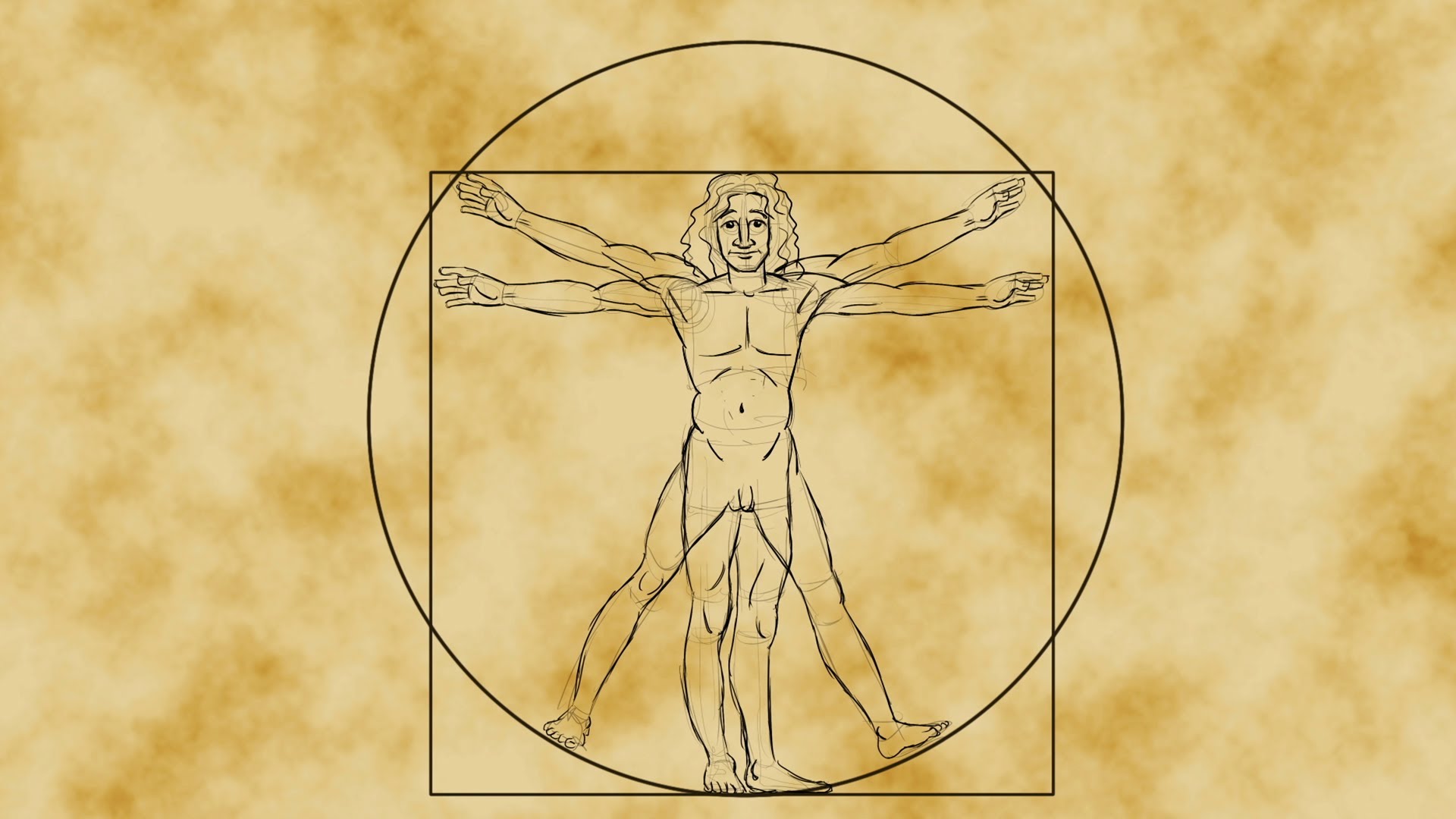The Vitruvian Man (Italian: Le proporzioni del corpo umano secondo Vitruvio, which is translated to “The proportions of the human body according to Vitruvius”), or simply L’Uomo Vitruviano, is a drawing by Leonardo da Vinci from around 1490.
This image demonstrates the blend of mathematics and art during the Renaissance and demonstrates Leonardo’s deep understanding of proportion. In addition, this picture represents a cornerstone of Leonardo’s attempts to relate man to nature.
According to Leonardo’s preview in the accompanying text, written in mirror writing, it was made as a study of the proportions of the (male) human body as described in Vitruvius. The text is in two parts, above[a] and below[b] the image.
The first paragraph of the upper part reports Vitruvius: “Vetruvio, architect, puts in his work on architecture that the measurements of man are in nature distributed in this manner, that is:
- a palm is four fingers
- a foot is four palms
- a cubit is six palms
- four cubits make a man
- a pace is four cubits
- a man is 24 palms
and these measurements are in his buildings”. The second paragraph reads: “if you open your legs enough that your head is lowered by one-fourteenth of your height and raise your hands enough that your extended fingers touch the line of the top of your head, know that the centre of the extended limbs will be the navel, and the space between the legs will be an equilateral triangle”.
The lower section of text gives these proportions:
- the length of the outspread arms is equal to the height of a man
- from the hairline to the bottom of the chin is one-tenth of the height of a man
- from below the chin to the top of the head is one-eighth of the height of a man
- from above the chest to the top of the head is one-sixth of the height of a man
- from above the chest to the hairline is one-seventh of the height of a man.
- the maximum width of the shoulders is a quarter of the height of a man.
- from the breasts to the top of the head is a quarter of the height of a man.
- the distance from the elbow to the tip of the hand is a quarter of the height of a man.
- the distance from the elbow to the armpit is one-eighth of the height of a man.
- the length of the hand is one-tenth of the height of a man.
- the root of the penis is at half the height of a man.
- the foot is one-seventh of the height of a man.
- from below the foot to below the knee is a quarter of the height of a man.
- from below the knee to the root of the penis is a quarter of the height of a man.
- the distances from below the chin to the nose and the eyebrows and the hairline are equal to the ears and to one-third of the face.
What’s so special about Leonardo da Vinci’s Vitruvian Man? With arms outstretched, the man fills the irreconcilable spaces of a circle and a square — symbolizing the Renaissance-era belief in the mutable nature of humankind.
James Earle explains the geometric, religious and philosophical significance of this deceptively simple drawing.
Lesson by James Earle, animation by TED-Ed.

